Full Guide on How to Master Tree Photography in Any Season
In the art of photography, Trees themselves are eternal muses; these are beautiful, eloquent, changeable things. Trees can be coated with spring flowers or trellised in winter icy silence, and they will always provide the photographer with endless possibilities of storytelling. But to truly master tree photography, you need more than just a camera.
You have to have technique, imagination, and a touch of post-process magic. That's where tools like HitPaw FotorPea Photo Enhancer shine, bringing your nature shots to life with crisp detail and vivid color in just one click.
Let's explore how to photograph trees throughout the year, capture their seasonal spirit, and transform your images into art.
What is Tree Photography?
Tree photography is a specialized genre of nature photography focused on capturing the form, detail, mood, and surroundings of trees. Whether it is an isolated oak body against a golden sky or a dense rainforest full of texture and light, this style requires you to pay attention to shape, time of year, and its mood.
It's more than just snapping a tree in a park-tree photography involves creative compositions, mastery of light, and a strong sense of storytelling. Be it bark texture or a whole forest canopy, you are capturing the silent drama and magnificence of nature. And thanks to smartphone technology and editing tools like HitPaw FotorPea Photo Enhancer, it's never been easier to elevate your tree shots from simple to spectacular.
Best Time and Locations for Tree Photography
Seasonal Impact on Tree Photography
Seasons greatly influence the visual and emotional impact of tree photography. That is how each transfigures your tree shots:
Spring: Blossoms and Rebirth
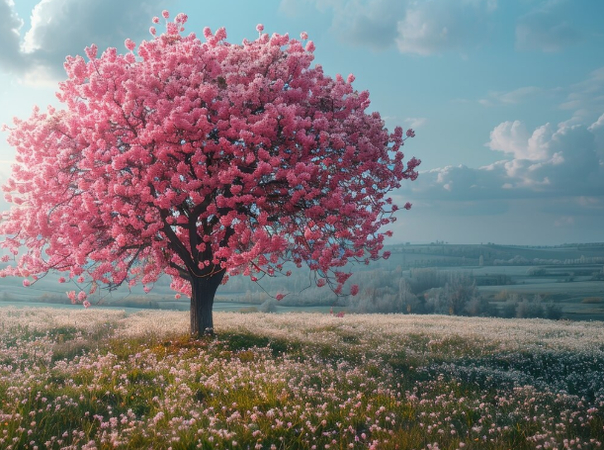
Spring is arguably the best time of year for tree photography if you're aiming for delicate beauty. When you include flowers, such as cherry blossoms or jacarandas, in your composition, they bring color and newness to your image.
Summer: Vibrant Greens and Canopy Textures
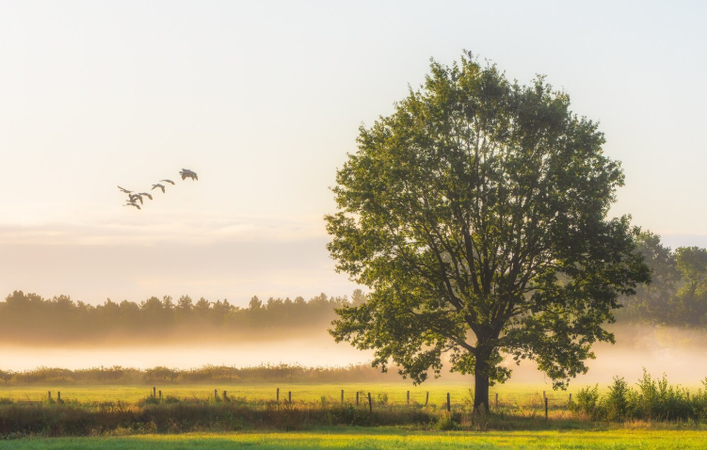
During the summer, trees are full of foliage. This is when one needs to go into depth and explore the texture of the forest. You'll learn a lot about how to photograph trees in a forest by experimenting with the interplay of sunlight and dense leaves.
Autumn: Rich Colors and Contrast
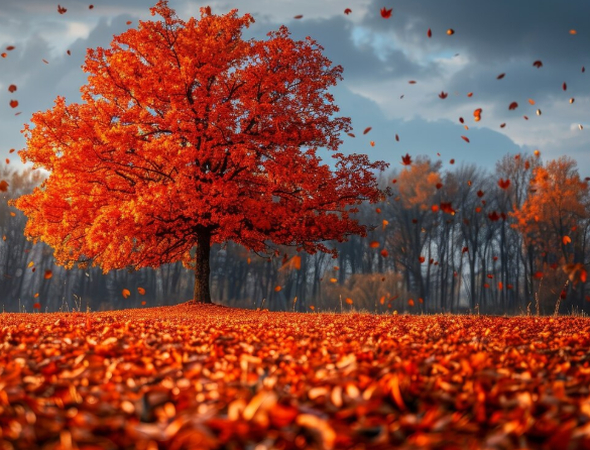
The season of autumn is that of comparison, reds and oranges and yellows over dark bark. It's also perfect for editing three photos in Lightroom or Hitpaw Fotorpea to enhance saturation and texture.
Winter: Minimalism, Snow-Laced Branches, Fog
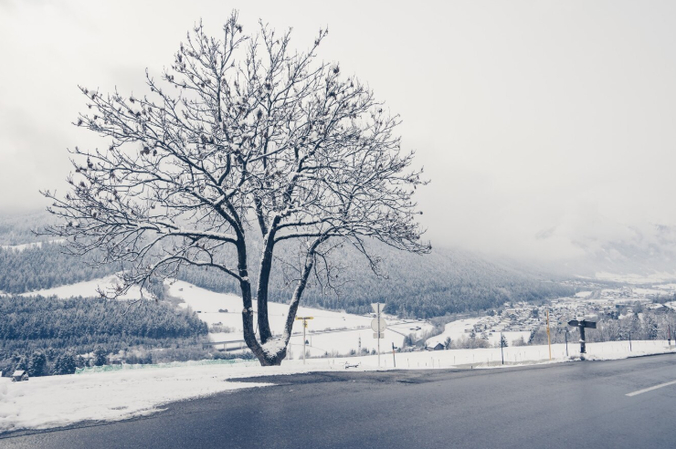
Photographing trees in winter opens a whole new perspective. Snow reduces the scene to simplicity, and fog augments the mood. This season is ideal for tree silhouette photography or experimenting with black and white tree photography for striking compositions.
Choosing the Right Location
A tree is only as powerful as the backdrop it stands against. That is where to find it:
Local Forests, National Parks, Botanical Gardens
These places offer variety and density, making them ideal for exploring how to photograph trees in a forest with a wide lens and thoughtful angles.
Urban Trees
Do not underestimate a tree-lined city street and an old tree between two buildings. With those scenes, the contrast and dramatic photos could be obtained.
Lone Trees in Fields for Dramatic Impact
Isolated trees in open landscapes create emotional resonance, especially in tree silhouette photography during sunrise or sunset.
Essential Gear for Tree Photography
Cameras and Lenses
You do not have to have high-quality equipment, but it is essential to know your basics.
Camera Settings for Tree Photography
- Depth Priority Aperture Control: f/4-f/8 should be used in order to separate the subject or have deeper depth.
- Low ISO for Clarity: In the case of clarity, the ISO range 100-200 will make your images noise-free.
- Tripod Use for Long Exposures: This is particularly important when you are shooting in low light or the white morass of woods.
Mastering the tree photography camera settings ensures your images are technically sound.
Recommended Lenses
- Wide Angle Lenses: Best suited for taking long trees or an entire forest.
- Telephoto Lenses: Perfect for targeting a branch that is distant or extracting a single tree in a congested place.
- Macro Lens: Perfect for bark texture, leaves, or raindrops-excellent for creative tree photography ideas.
Composition Techniques for Stunning Tree Photos
Framing and Perspective
- Shoot from Below for a Majestic Feel: Emphasizes height and grandeur.
- Use Paths or Light Rays to Lead into the Tree: Adds visual interest.
- Centered Trees for Symmetry; Rule of Thirds for Dynamics: Balance or tension-your choice.
These tricks work wonders when photographing trees alone or in groups.
Use of Light and Shadow
- Golden Hour Backlighting: Adds warmth and depth.
- Silhouettes During Sunrise/Sunset: Essential for impactful tree silhouette photography.
- Harsh Midday Light for Textures: Enhances bark and leaf detail, especially useful in editing tree photos in ai photo enhancer
Editing Tree Photography Like a Pro
Basic Post-Processing Techniques
- Increase Contrast and Saturation for Autumn Photos: Makes colors pop.
- Use Local Adjustments to Highlight Tree Bark or Leaves: Adds focus.
- Remove Distractions Using Healing Tools: Clean backgrounds improve composition.
Advanced Techniques
- Split Toning for Mood: Great for fog or dusk scenes.
- Dodging and Burning for Dynamic Light: Enhances depth and movement.
- Presets or LUTs for Consistent Themes: Save time and unify your portfolio.
These enhancements become even more seamless with tools like HitPaw FotorPea Photo Enhancer, which sharpens textures and boosts color accuracy in just one click.
Tree Photography in Different Weather Conditions
Fog and Mist
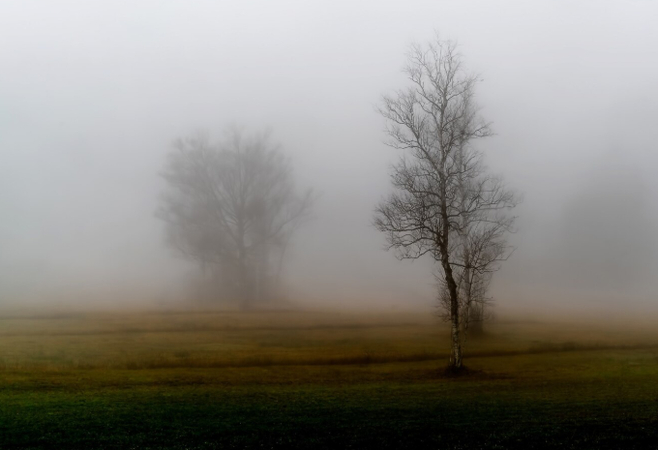
Learn how to photograph trees in fog for an ethereal feel. Mood: Use manual focus, underexpose a little.
Rain and Overcast
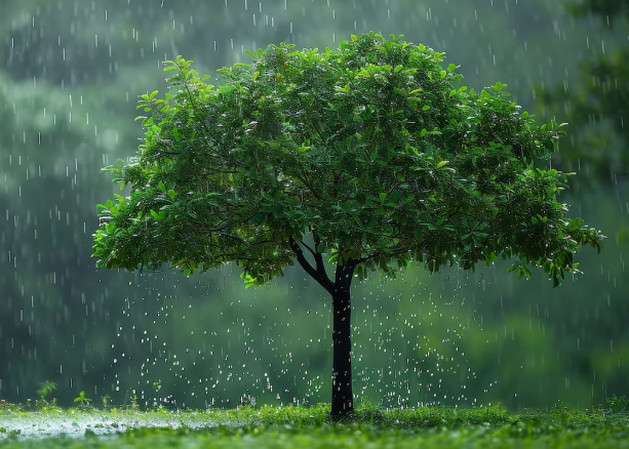
Leaf texture increases with diffused light, which is soft. Rain enhances the depth of greens, softening overly bright tones that might appear harsh from a distance but look rich and detailed in close-up shots.
Snow and Ice
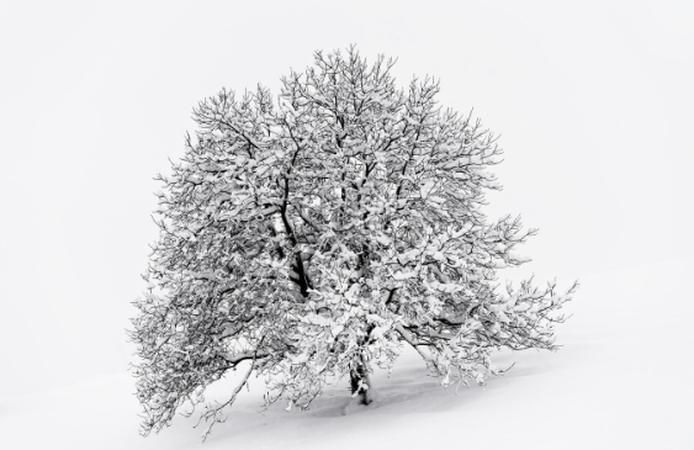
Photographing trees in winter creates minimalist magic. Search for contrast of dark trunks and white snow, or detail of frost.
Creative Tree Photography Ideas
Abstracts and Close-ups
Take a close-up of leaves, tree bark, or drops of water. Use macro lenses for these creative tree photography ideas.
Reflections and Shadows
Lakes and puddles present reflective drama. Trees are also able to generate lovely shadows over the fog or snow.
Silhouettes and Backlight
It is ideal for sunrise or sunset. Silhouettes emphasize a tree's structure and shape-two elements that are essential in tree silhouette photography.
Black and White Tree Photography
Ideal for faded scenes and moody, misty compositions. Black and white tree photography strips distraction and emphasizes form.
Common Mistakes to Avoid in Tree Photography
Cluttered Backgrounds
Take care of what is behind your subject. Distracting things destroy concentration.
Ignoring Light Direction
Lighting is everything in tree photography. Find out where your light origin is situated and utilize it.
Overediting
On the one hand, post-processing is obligatory, and on the other hand, excessive saturation or contrast makes the photos unnatural. Tools like HitPaw help balance enhancements.
Real-Life Case Studies and Examples
Forest Scene in Spring
This is captured with a wide-angle lens and at an aperture of f/5.6. Concentrated on symmetry through rays of the sun piercing through green leaves. After editing, a minor bump of contrast and enhancement of clarity in Lightroom took place.
Lone Tree in Winter
Applied a telephoto lens and centered composition to stress the feeling of isolation. Applied black and white tree photography post-edit to enhance mood and story.
Autumn Canopy in the Mountains
Shot on a drone during the golden hour. Enhanced with editing tree photos in Lightroom-saturation, split toning, and dodge/burn for visual depth.
Final Thoughts
Mastering tree photography means understanding the seasons, working with light, choosing intense compositions, and using editing tools wisely. Whatever tree you may be taking a picture of, a blossoming cherry tree or a pine covered in the mist of the morning, there is always a story that every tree is trying to tell.
By applying the proper tree photography camera settings, exploring creative tree photography ideas, and using innovative tools like HitPaw FotorPea Photo Enhancer, your photos can move from good to breathtaking, no matter the time of year.
FAQs
Q1. What camera settings are best for tree photography?
A1. Apply the aperture priority mode (f/4 f/8), the ISO of 100- 200, and a tripod to keep the shots steady, particularly where light is low.
Q2. How do I take good pictures of trees with my phone?
A2. Shoot during golden hour, use gridlines for composition, and enhance photos later using apps like HitPaw Fotorpea.
Q3. What is the best time to photograph trees?
A3. Spring and autumn offer the richest visuals, but each season has something unique to offer in tree photography.
Q4. Should I use filters in tree photography?
A4. Yes, but to a small degree. To compensate for glare, polarizers are possible, and to assist in long exposures in bright light, there are ND filters available.








 HitPaw Univd (Video Converter)
HitPaw Univd (Video Converter) HitPaw VoicePea
HitPaw VoicePea  HitPaw VikPea (Video Enhancer)
HitPaw VikPea (Video Enhancer)



Share this article:
Select the product rating:
Daniel Walker
Editor-in-Chief
This post was written by Editor Daniel Walker whose passion lies in bridging the gap between cutting-edge technology and everyday creativity. The content he created inspires the audience to embrace digital tools confidently.
View all ArticlesLeave a Comment
Create your review for HitPaw articles